Discover 11 hidden attractions, cool sights, and unusual things to do in Arad (Romania). Don't miss out on these must-see attractions: Neumann Palace, Catedrala Veche, and Holy Trinity Cathedral. Also, be sure to include Fortress of Arad in your itinerary.
Below, you can find the list of the most amazing places you should visit in Arad (Arad).
Table of Contents
Neumann Palace
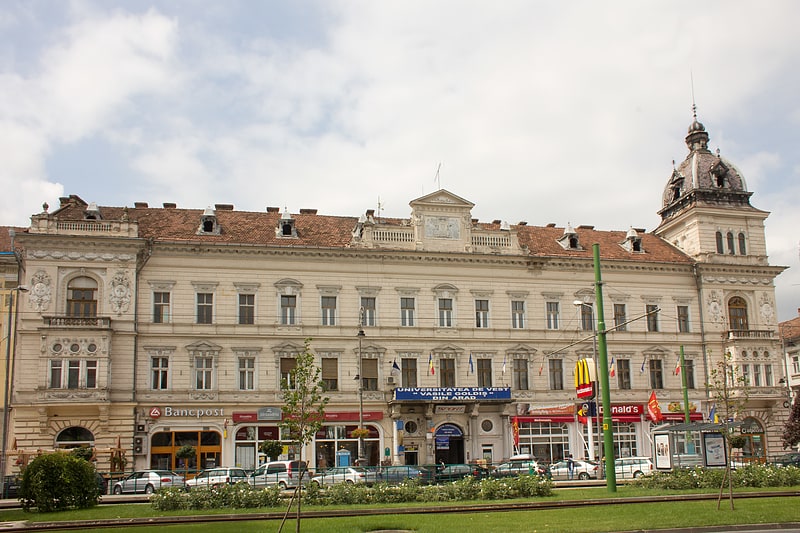
Also known as: Palatul Neumann din Arad
Building in Arad, Romania. The Neumann Palace is an eclectic building located in Arad. It is a historical monument. It was built in 1891–1892 by the wealthy family of Neumann. It was the biggest building in the city for a long period.[1]
Address: Bulevardul Revolutiei Nr.69, Arad
Catedrala Veche

The Church of the Nativity of Saint John the Baptist is a Romanian Orthodox church located at 15 Piața Catedralei, Arad, Romania. It is dedicated to the Nativity of Saint John the Baptist.
After the demolition of an old church near the Mureș River, a new one was begun upon the initiative of Prokopije Ivačković, the Bishop of Arad. Construction lasted from 1862 to 1865, receiving funds from the Mocioni family and from Viennese banker Simon Sinas. Anton Czigler, a native of Gyula, was the architect. After its dedication, the building served as the diocesan cathedral.
Certain details of the facade, such as the pediment, were only added during the 1905-1906 restoration. In 1966, three mosaics were placed on the facade. The bell, dated 1764, comes from the previous church.
The building is U-shaped, the wings opening on the yard through semicircular arches. The lower interior walls are of artificial marble; the middle feature plant decorations; the upper is painted in Orthodox iconography. The windows are of colored glass, without designs. The two towers were lengthened in 1904; each has a clock. The style is a classicizing neo-Baroque, more akin to 19th-century Western than contemporary Orthodox churches. Over time, the location became less central, so that a new cathedral superseded the old in 2009.
The church is listed as a historic monument by Romania's Ministry of Culture and Religious Affairs.[2]
Address: Strada Academia Teologică, Arad
Holy Trinity Cathedral
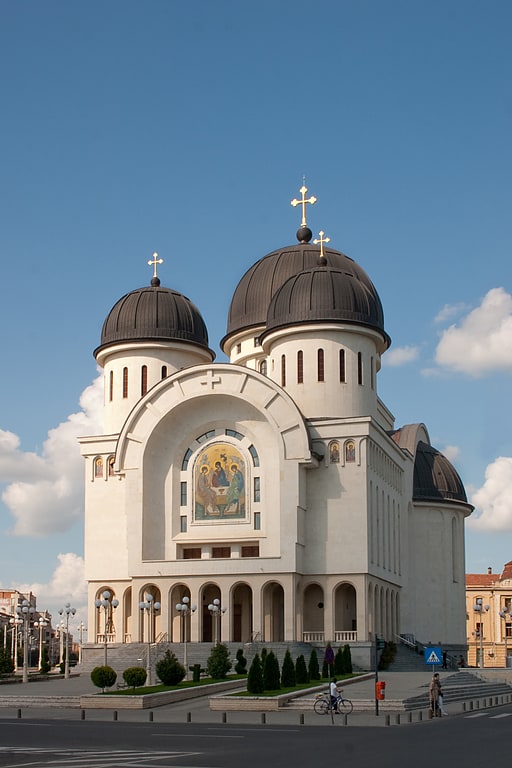
Also known as: Catedrala „Sfânta Treime” din Arad
Cathedral in Arad, Romania. The 'Holy Trinity' Orthodox Cathedral is a Romanian Orthodox cathedral in Arad, in the Crișana region of western Romania. It is the main cathedral of the episcopal see of Arad, currently headed by Timotei, Archbishop of Arad.[3]
Address: Bulevardul Revolutiei, 310174 Arad
Fortress of Arad
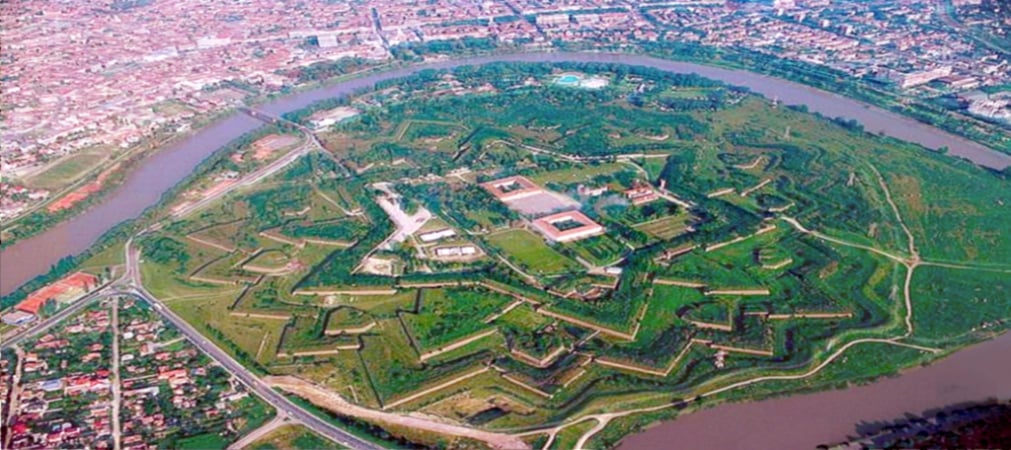
Also known as: Cetatea Aradului
Fortress in Arad, Romania. The Fortress of Arad is a fortification system built in the city of Arad, on the left bank of the Mureș River in the 18th century at the direct order of the Habsburg Empress Maria Theresa. The fortress lies today in the Subcetate neighbourhood of the city, on the former military border between the Habsburg Empire and the Ottoman Empire. The fortress has been used during its existence as a military garrison, a military prison and today it is the home of the Mixed Romanian-Hungarian Battalion since 1999.[4]
Address: Strada Cetăţii, Arad
Serbian Church in Arad
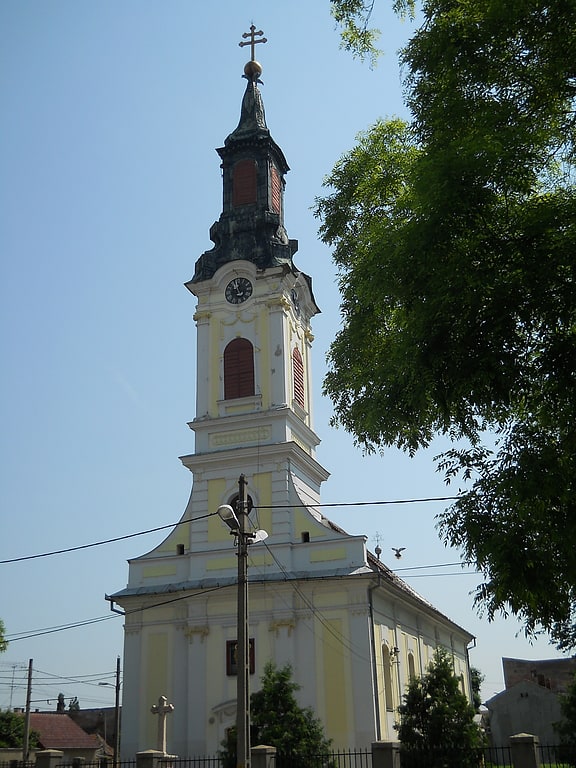
Also known as: Biserica Sârbească din Arad
Orthodox church in Arad, Romania. The St. Peter and St. Paul's Serbian Orthodox Church, also known as the Serbian Church, is an edifice located in the city of Arad, Romania. It was built between 1698 and 1702 and it is located in the Serbian square.
One of the oldest buildings in Arad, it was erected by the Serbian community of the city. It was an important presence because of the arrival of Habsburg armies in the area. After the treaty of Karlowitz the entirety of Transylvania became an Austrian province. Because the border with the Ottoman Empire was set on the Mureș River, in the area of Arad were posted guards, especially Serbians. As a consequence a church was built in the biggest city of the area, Arad. Artist Stefan Tenecki painted the icons of the iconostasis in the second half of the 18th century.
The building was financed by Captain Iovan.[5]
Moise Nicoară National College

Moise Nicoară National College is a public day high school in Arad, Romania.[6]
Arad Administrative Palace
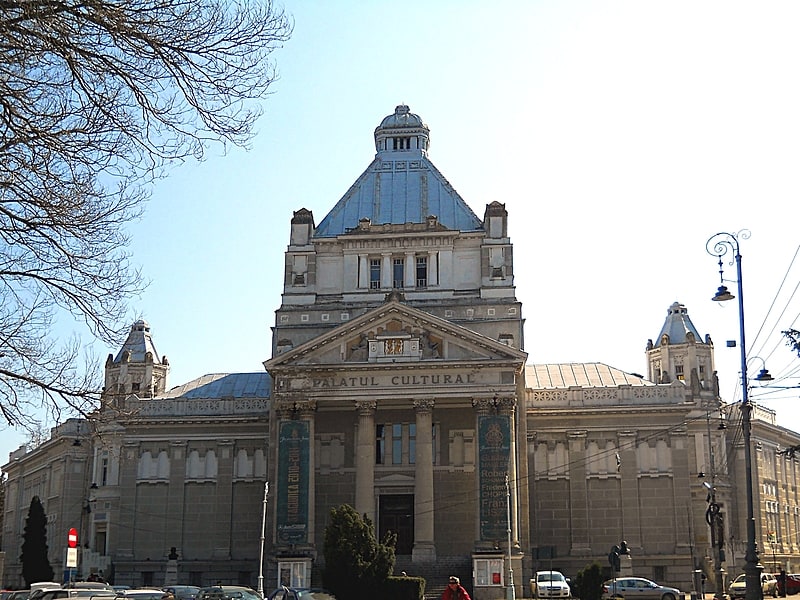
Also known as: Palatul Administrativ din Arad
The Arad Administrative Palace is an historic building located in Arad, Romania. It houses the city hall and the prefecture.[7]
Primăria Arad
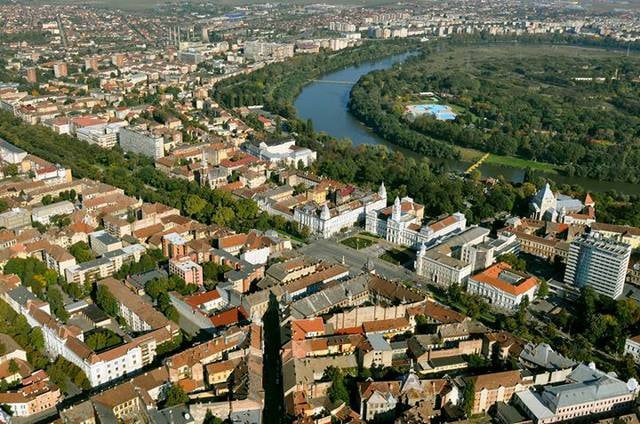
City hall
Address: Bd.Revoluției 75, Arad
Turnul de apă
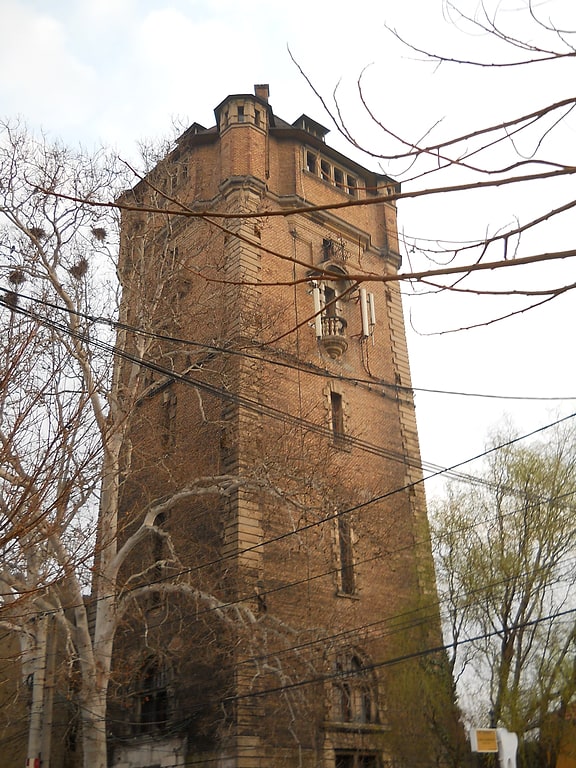
The water tower is a building in Arad, built by the English firm Shone and Ault, the firm that executed Arad's first water supply project.
The water tower has a storage capacity of 300 cubic meters, a height of 34 meters and was built in 1895 to supply water to the city and to signal fires, which is why it was built near the fire station. At the time of its construction, it was the tallest building in the city. It is a massive stone and brick construction, notable for the decoration of its balconies and windows. The tower served in the city's water supply system until 1956.
Since 1990 the tower has been in private ownership, housing the "Water Tower" art gallery, which has a permanent water exhibition, and many art and themed exhibitions.
The exhibition space is spread over 5 levels: on the first floor there are temporary exhibitions of visual artists. on the second floor there are works of the 70s and 80s, made by painters from Arad. On the third floor is the exhibition Domestic Water, which shows the ways people have used water over the years. On the fourth floor are the traditions of Arad's firefighters and the way the city's water supply has been done over the years. On the fifth floor is the water storage tank, with a capacity of 300 cubic meters, which can now be climbed on a ladder.
St. Anthony of Padova Church
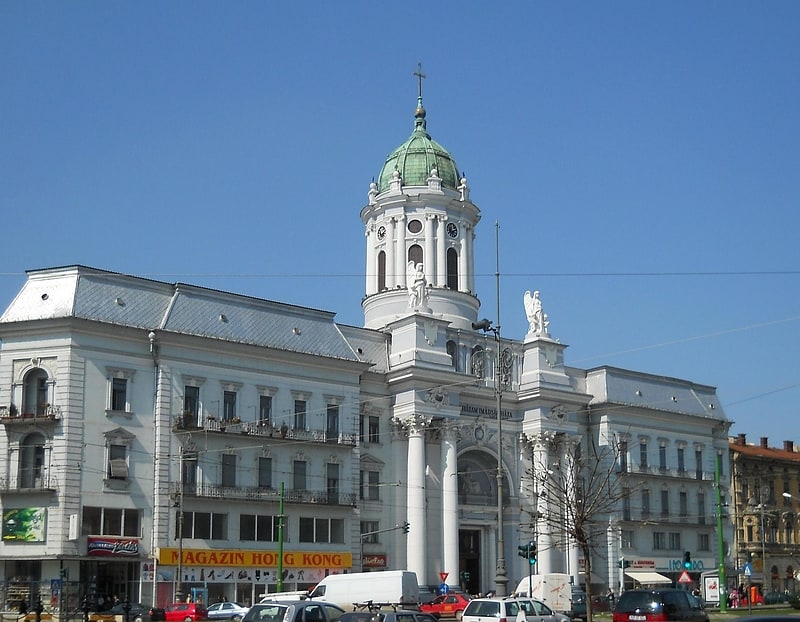
The Roman Catholic Church "Saint Anthony of Padua" is a place of worship in the city of Arad. It was built between 1902 and 1904 by the architect Milan Tabacovici from Arad. It was consecrated in 1911. The place of worship has elements representing classicist, baroque and renaissance styles.
The church ship is 43 metres long and 17 metres wide. Above the entrance is a replica of the Pieta statue. The cross on the dome is 56 metres high.
Teatrul Clasic Ioan Slavici
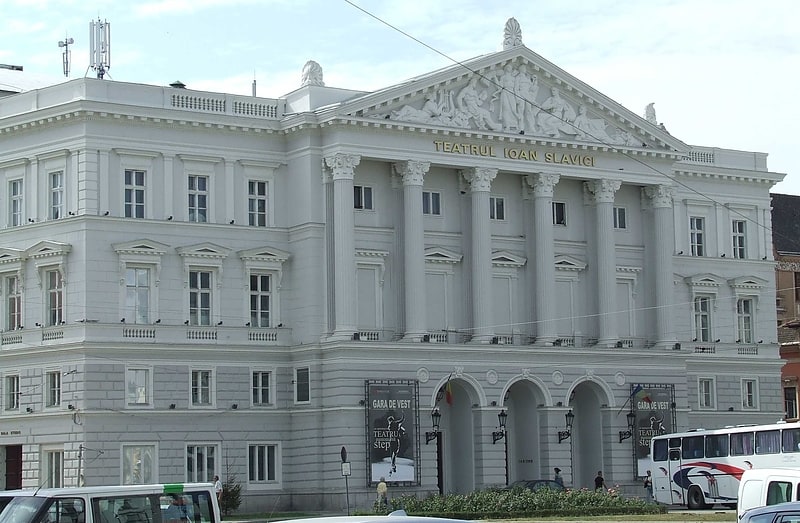
Also known as: Teatrul Clasic „Ioan Slavici”
Theatre. The Ioan Slavici Classical Theatre is a theatre in the city of Arad, in the western side of Romania.
The theatre was built in 1874, and displays a neoclassical architecture style. It was designed around 1862 by the architect Anton Czigler (or possibly his son, Győző Czigler), but the construction started only in 1869, under the supervision of architect Antal Szkalnitzky.
The name was given by Ioan Slavici, a Romanian writer and native of Șiria, a commune near Arad.[8]
Address: 3 Strada Gheorghe Lazăr, Arad